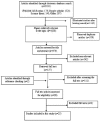Prevalence of malocclusion among Iranian children: A systematic review and meta-analysis
- PMID: 27857763
- PMCID: PMC5090996
- DOI: 10.4103/1735-3327.192269
Prevalence of malocclusion among Iranian children: A systematic review and meta-analysis
Abstract
Background: The high prevalence of malocclusion is a public health problem in the world and the third priority in oral care. Numerous primary studies have presented reports on the prevalence of malocclusion among Iranian children. In combination, the results of these studies using meta-analysis are highly valuable for health policy-making. Similarly, this study aimed at determining the prevalence of different types of malocclusion among Iranian children.
Materials and methods: Using relevant keywords, national and international databases were explored. After narrowing down the search strategy and leaving out the duplicates, the remaining articles were screened based on titles and abstracts. To increase search sensitivity, reference lists of the papers were examined. To identify unpublished articles and documentations, a set of negotiations were done with the people involved and research centers. Finally, the heterogeneity index between the studies was determined using Cochran (Q) and I2 tests. According to the results of heterogeneity, the random effects model was used to estimate the prevalence of malocclusion in Iran.
Results: In total, 25 articles were included in the meta-analysis process. The prevalence of dental malocclusion was estimated in 28,693 Iranian children aged 3-18 years. The total prevalence of Class I, II, and III malocclusion was 54.6% (46.5-62.7), 24.7% (20.8-28.7), and 6.01% (4-7.1), respectively. The prevalence of Class I, II, and III malocclusion was 44.6% (32.9-56.2), 21.5% (18.01-25.1), and 4.5% (3.2-5.9) in boys and 48.8% (36.8-60.8), 21.5% (16.9-25.1), and 5.5% (3.9-7.1) in girls, respectively.
Conclusion: This study showed a high prevalence of malocclusion among Iranian children. Also, the results indicated that the prevalence is higher in girls.
Keywords: Children; malocclusion; meta-analysis as topic; review.
Figures
References
-
- Mtaya M, Brudvik P, Astrøm AN. Prevalence of malocclusion and its relationship with socio-demographic factors, dental caries, and oral hygiene in 12- to 14-year-old Tanzanian schoolchildren. Eur J Orthod. 2009;31:467–76. - PubMed
Publication types
LinkOut - more resources
Full Text Sources
Other Literature Sources
Medical




